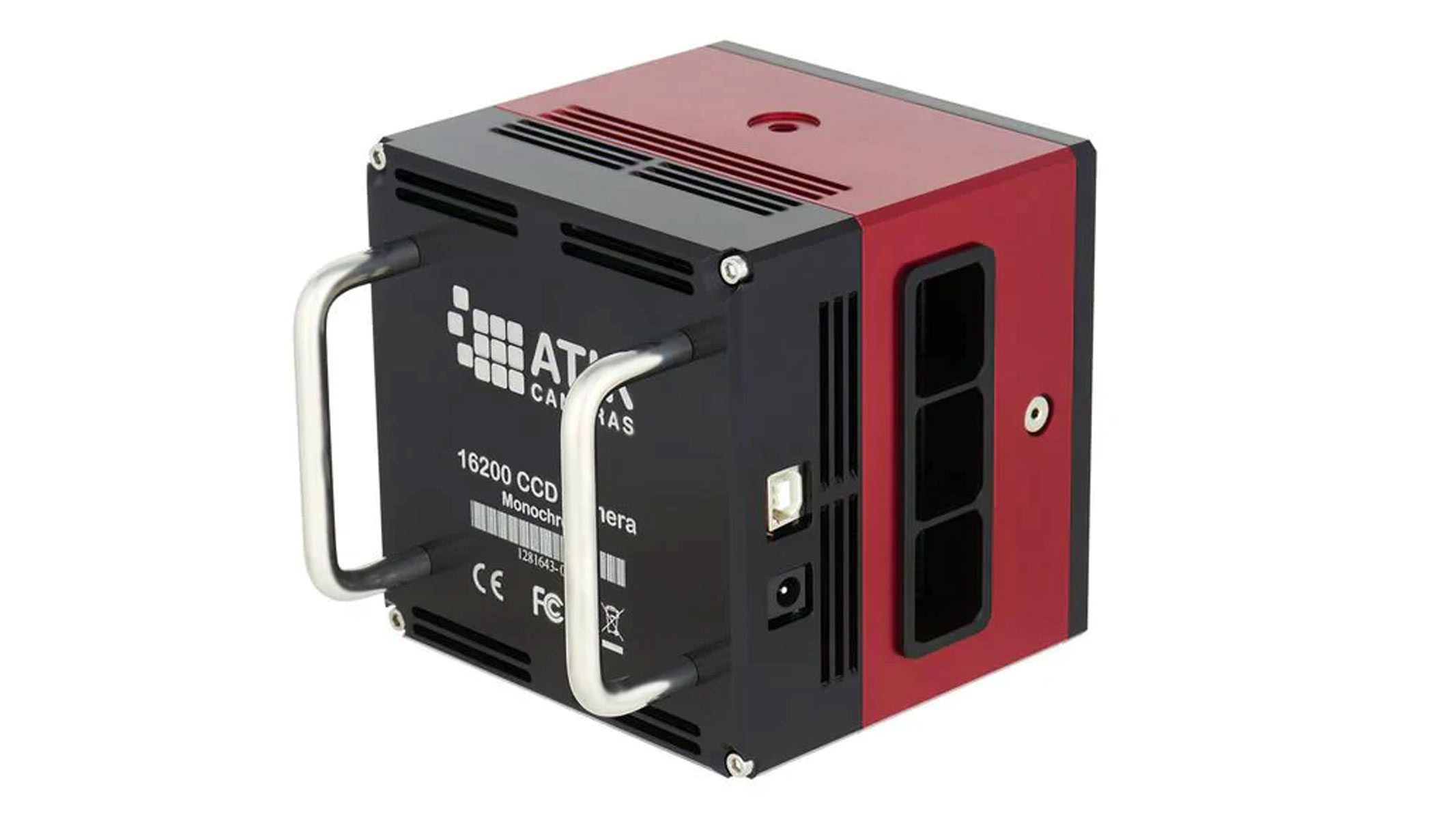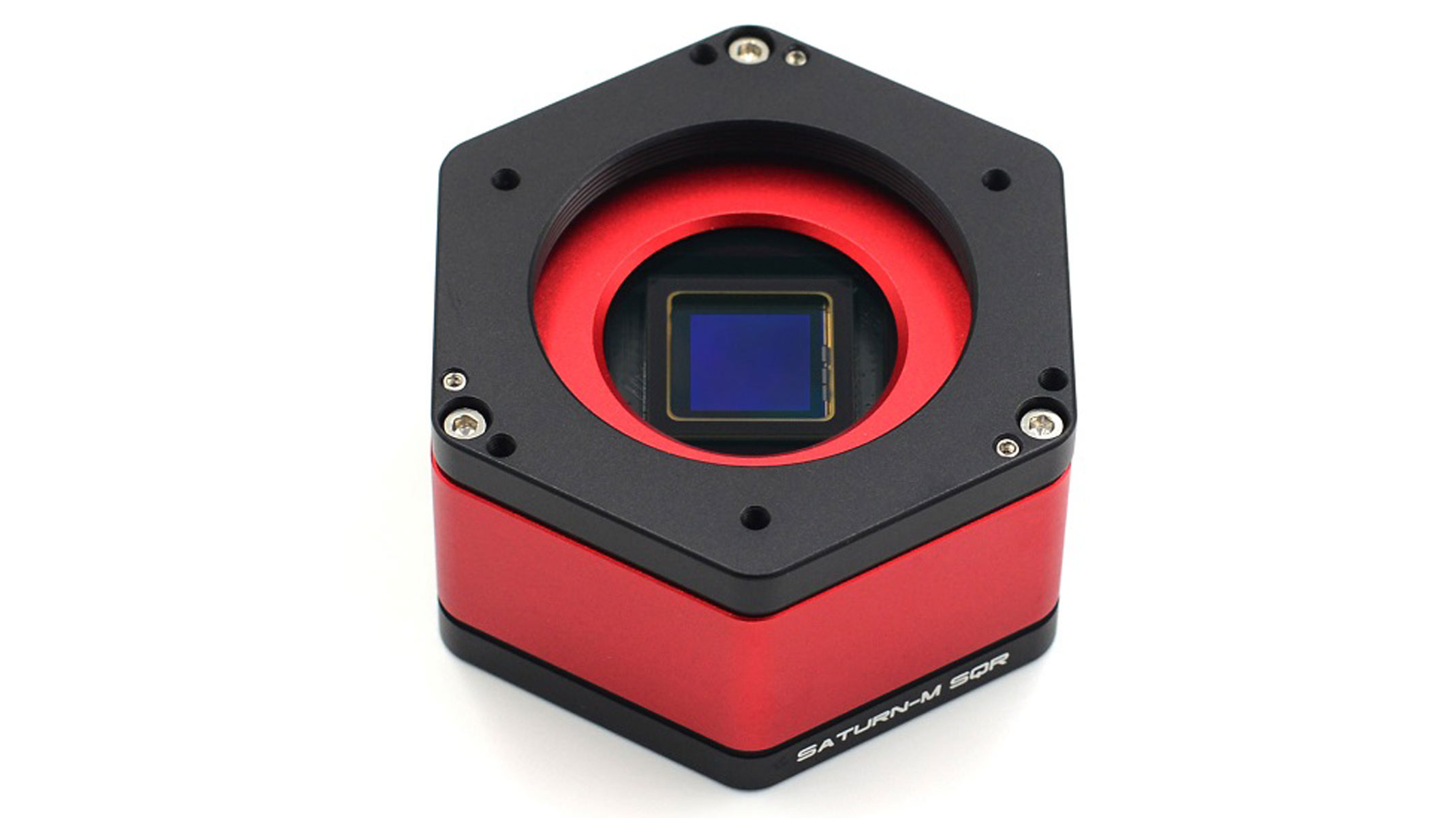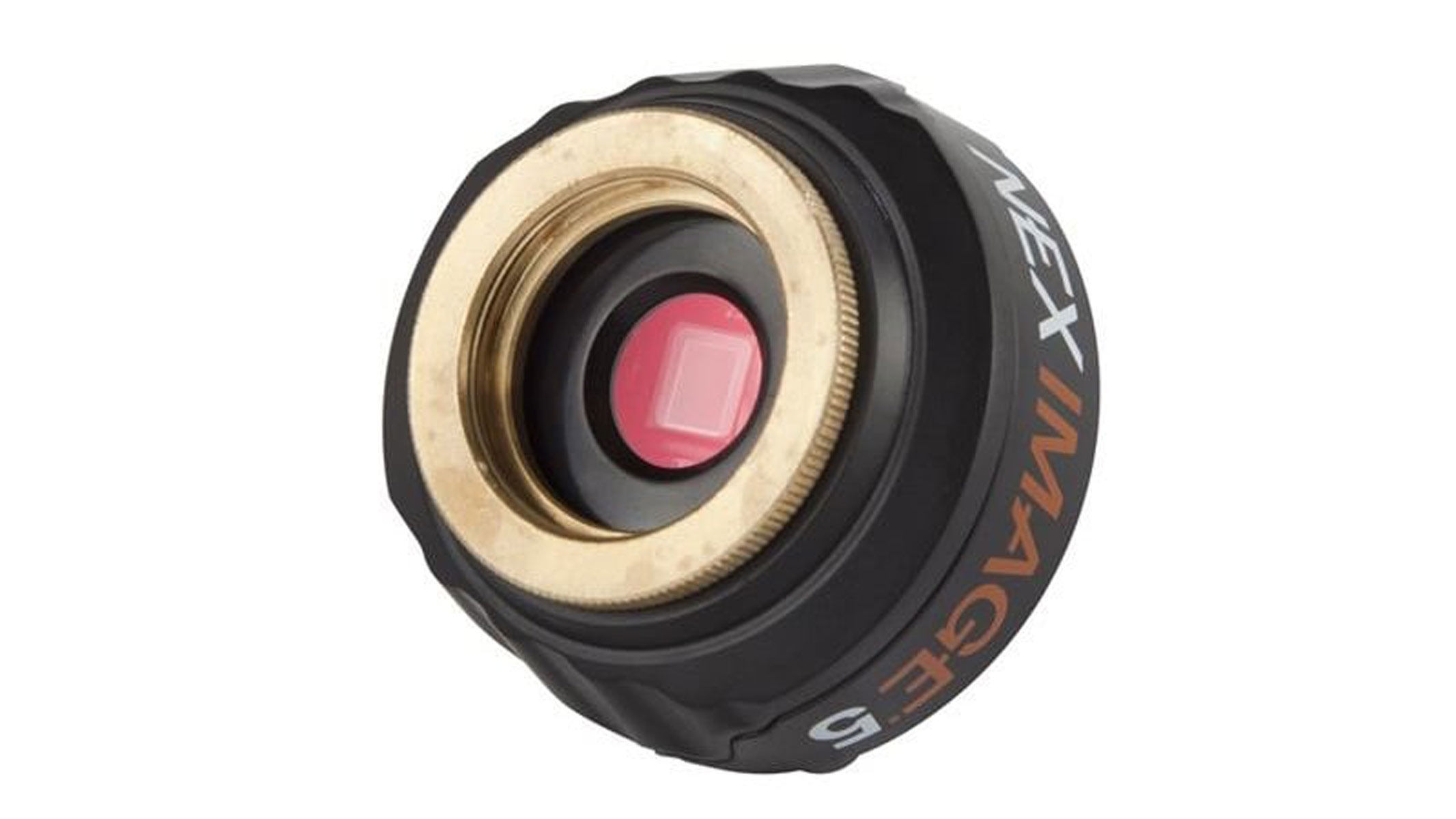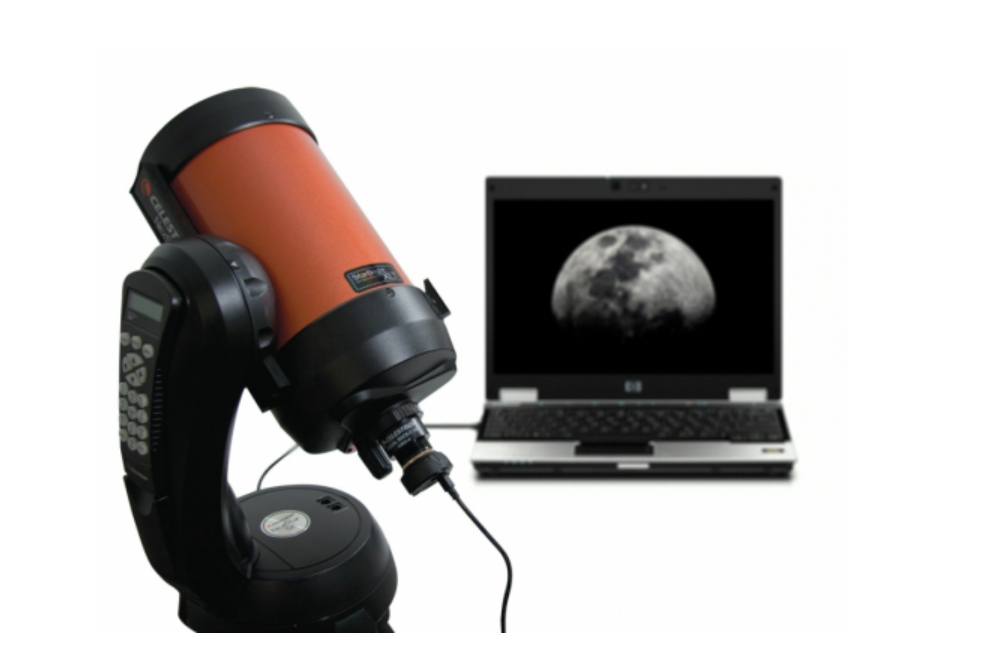The best astronomy cameras open a window to the universe, revealing celestial wonders invisible to the naked eye. This buying guide highlights the six best dedicated astrophotography cameras for 2025, helping enthusiasts and advanced amateurs alike choose the perfect tool.
Different from the best cameras for astrophotography (mirrorless and DSLR models), these cameras are dedicated solely to astronomy and are used in combination with one of the best telescopes to image the night sky.
Whether you’re chasing nebulas, planets, or star clusters, the right camera can elevate your images from good to breathtaking. We’ll explore standout models like the Player One Uranus-C and QHY294M Pro, detailing their specs, strengths, and ideal uses. Backed by expert insights from a veteran astro-imager, this guide ensures you invest wisely in gear that matches your ambitions, skill level, and budget.
If you want a camera that is good for other styles of photography, check out our guide to the best cameras. For more information on what telescope to buy with your astrocam, we also have a guide to the best telescopes. Or if you want to observe the night sky as simply and conveniently as possible, beginner astronomers may want to use one of the best binoculars, instead of or alongside these cameras.
The Quick List
We’ve rounded up our picks for the best dedicated astrophotography cameras. For more in-depth information on a particular camera, click the read more links.
Best for planetary imaging
Buy it if
✅ You want a budget-friendly camera for planetary and deep-sky imaging without sacrificing quality.
✅ Portability and simplicity matter more than advanced cooling features.
Don’t buy it if
❌ You need a cooled camera for long-exposure shots of faint nebulae.
❌ Your setup demands higher resolution for oversized prints.
The bottom line
A stellar all-rounder, the Uranus-C balances performance and affordability for most astrophotographers.
The Player One Uranus-C shines as a versatile astrophotography camera, blending high sensitivity with a manageable price tag. Its Sony IMX585 sensor delivers crisp, detailed images of planets and deep-sky objects, thanks to a peak quantum efficiency above 90%.
With a 2.9-micron pixel size and 47 fps frame rate, it’s ideal for capturing a wide range of celestial targets. While it lacks cooling, its low read noise keeps shorter exposures clean. Beginners and intermediates will appreciate its ease of use and portability, and it’s especially well-suited for imaging the moon and planets.
|
Attributes |
Notes |
|
Design |
Lightweight, compact build enhances portability. |
|
Performance |
Intuitive operation suits all skill levels. |
|
Functionality |
Excellent sensitivity, speed and user friendliness. |
Best for general deep-sky imaging
Buy it if
✅ You’re focused on deep-sky imaging and need top-tier large MP image quality
✅ You’re comfortable with monochrome and filter workflows for maximum detail.
Don’t buy it if
❌ Your budget can’t stretch to a high-end cooled camera.
❌ You prefer one-shot color for simpler processing.
The bottom line
Unmatched for deep-sky work, this camera delivers pro-level results.
The QHY294M Pro is a deep-sky enthusiast’s dream, featuring a cooled Sony IMX492 sensor that tackles noise in long exposures. Its 4/3-inch format and 4.63-micron pixels capture expansive fields with stunning detail, perfect for nebulae and galaxies.
Cooling to -35C below ambient ensures clean images, while the 11.7MP resolution offers flexibility for large prints. Monochrome design demands filters, adding cost but boosting customization. It’s a premium choice for serious astrophotographers prioritizing quality over convenience.
|
Attributes |
Notes |
|
Design |
Robust, sealed chamber prevents dew build-up. |
|
Performance |
Cooling and buffer enhance long-exposure shots. |
|
Functionality |
Exceptional clarity and depth for faint objects. |
Best all-in-one mono deep-sky camera
Buy it if
✅ You’re targeting high-resolution deep-sky images with a cooled, filter-ready mono camera that works out of the box.
✅ Minimum fuss for mono-filtered imaging. A working set-up, all-in-one solution.
Don’t buy it if
❌ You need fast frame rates for planetary or video imaging.
❌ Your budget can’t accommodate a high-end investment.
The bottom line
A top-tier choice for deep-sky imaging enthusiasts.
The Atik One 9.0 Mono CCD camera is a deep-sky imaging marvel, featuring a 9MP Sony ICX814 sensor for exceptional detail. Its integrated five-position filter wheel simplifies monochrome workflows, while cooling to -38C below ambient ensures noise-free long exposures.
The 3.69-micron pixels excel with binning, offering flexibility across telescope setups. Though its 3 fps frame rate limits planetary use, the argon-filled chamber and USB hub enhance its appeal for serious astrophotographers chasing intricate nebulae and galaxies.
|
Attributes |
Notes |
|
Design |
Compact, argon-sealed with built-in filter wheel. |
|
Performance |
Streamlined control with USB hub integration. |
|
Functionality |
High-res, low-noise images for deep-sky brilliance. |
Best pro-level camera system
Buy it if
✅ You’re a pro seeking the highest resolution and quality.
✅ Budget isn’t a barrier for top-tier performance.
Don’t buy it if
❌ You need speed for planetary or video imaging.
❌ Cost outweighs your imaging goals.
The bottom line
A premium camera for advanced deep sky observers chasing the ultimate in image quality.
The Atik 16200 Colour APS-H CCD is a professional’s tool, featuring a massive Kodak KAF-16200 sensor for unparalleled detail. Its 16.2MP resolution and 6-micron pixels excel at wide-field deep-sky imaging, while cooling to -45C ensures noise-free long exposures.
The one-shot color design simplifies processing, though the 1 fps frame rate limits planetary use. Priced at a premium, it’s built for astrophotographers demanding gallery-worthy results and scientific precision.
|
Attributes |
Notes |
|
Design |
Sturdy, cooled body for reliability. |
|
Performance |
Simplified color imaging for pros. |
|
Functionality |
Stunning resolution and low-noise output. |
Best for lunar and solar imaging
Buy it if
✅ You focus on solar and lunar photography with a unique sensor. Also excellent for mono-filtered planetary imaging.
✅ You want solid performance without breaking the bank.
Don’t buy it if
❌ Deep-sky imaging is your main goal.
❌ You need cooling for noise control.
The Atik 16200 Colour APS-H CCD is a professional’s tool, featuring a massive Kodak KAF-16200 sensor for unparalleled detail. Its 16.2MP resolution and 6-micron pixels excel at wide-field deep-sky imaging, while cooling to -45C ensures noise-free long exposures.
The one-shot color design simplifies processing, though the 1 fps frame rate limits planetary use. Priced at a premium, it’s built for astrophotographers demanding gallery-worthy results and scientific precision.
|
Attributes |
Notes |
|
Design |
Sturdy, cooled body for reliability. |
|
Performance |
Simplified color imaging for pros. |
|
Functionality |
Stunning resolution and low-noise output. |
Best for beginners
Buy it if
✅ You’re new to astrophotography and want an affordable start.
✅ Ease of use matters more than advanced features.
Don’t buy it if
❌ You need high frame rates for detailed planetary work.
❌ Long-exposure deep-sky imaging is your goal.
The bottom line
An accessible, budget pick for astrophotography newcomers.
The Celestron NexImage 5 CCD is a beginner’s gateway to astrophotography, offering 5MP resolution at an unbeatable $199. Its 2.2-micron pixels and simple setup suit planetary and lunar imaging, with included software easing the learning curve. The 6.2 fps frame rate is modest, and the lack of cooling means noise in longer shots, but it’s perfect for newbies testing the waters without a big investment.
|
Attributes |
Notes |
|
Design |
Compact, fits standard eyepiece holders. |
|
Performance |
User-friendly with basic software support. |
|
Functionality |
Solid entry-level images for the price. |
Best dedicated astrophotography cameras: Comparison
|
Product |
Sensor size |
Price |
Frame rate |
Resolution |
Cooling |
Pixel size |
|---|---|---|---|---|---|---|
|
Player One Uranus-C |
1/1.2-inch CMOS |
$299 |
47 fps |
8.3 MP |
No |
2.9μm |
|
QHY294M Pro |
4/3-inch CMOS |
$1,299 |
16.5 fps |
11.7 MP |
Yes (-35C) |
4.63μm |
|
Atik One 9 Mono |
Sony ICX814, 1-inch CCD |
$3,000 |
3 fps |
9.0 MP |
Yes (-38C) |
3.69μm |
|
Atik 16200 Colour |
APS-H CCD |
$3,695 |
1 fps |
16.2 MP |
Yes (-45C) |
6μm |
|
Player One Saturn M-SQR |
1-inch CMOS |
$599 |
40 fps |
9.0 MP |
No |
3.76μm |
|
Celestron NexImage 5 |
1/2.5-inch CCD |
$199 |
6.2 fps |
5 MP |
No |
2.2μm |
User reviews
Online feedback for these cameras is largely positive, with users praising their specialized strengths and I’ve personally used most of these cameras. On Amazon, one reviewer of the Celestron NexImage 5 wrote, “Perfect for beginners—setup was a breeze, and lunar shots came out crisp for under $200.” The Player One Uranus-C earns kudos on High Point Scientific, with one user noting, “Amazing detail on planets for the price, though I wish it had cooling for longer shots.”
The QHY294M Pro garners acclaim on forums like Cloudy Nights, where a user said, “Noise control is phenomenal—worth every penny for deep-sky work.” Some critique the Atik 16200’s cost, with another Cloudy Nights reviewer stating, “Incredible images, but you’re paying a fortune for that the quality.” These insights reflect real-world satisfaction and trade-offs, as there always are with any camera.
Contributing experts
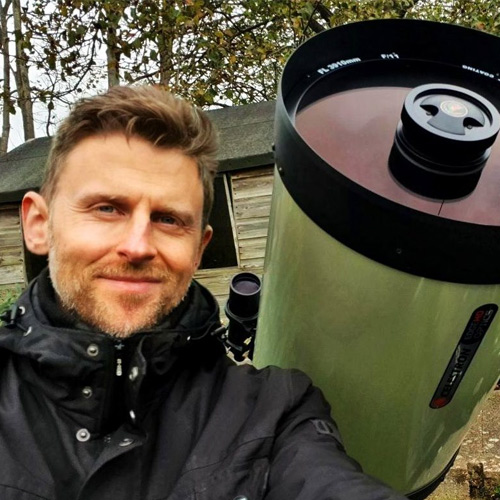
Damian A. Peach FRAS
Damian A. Peach FRAS is a renowned British amateur astronomer, astrophotographer, lecturer, and author with a career in astronomy exceeding three decades. In recognition of his significant contributions to amateur astronomy, the International Astronomical Union (IAU) renamed asteroid 27632 as Damianpeach.
He was elected a fellow of the Royal Astronomical Society in 2012. In 2018, he joined the scientific committee of the Aster Academy and received the Astronomical League’s esteemed Peltier Award for his work in the field. Additionally, in 2022, the Société Astronomique de France (SAF) honored him with the Julien Saget Prize for his contribution to astrophotography.
Astrophotography camera FAQ
What is the best astrophotography camera?
The Player One Uranus-C stands out as the best overall, offering high sensitivity, versatility, and affordability for both planetary and deep-sky imaging. Amazing camera for the price.
What is the cheapest astrophotography camera?
At $199, the Celestron NexImage 5 CCD is the most budget-friendly option, ideal for beginners starting with planetary shots.
Which camera is best for long-exposure imaging?
The QHY294M Pro excels here, with its cooled sensor reducing noise for stunning deep-sky captures over extended periods. Wonderful performance for wide field deep sky work.
Do I need a cooled camera for astrophotography?
Not always—these days uncooled models work surprisingly well for all manner of astro-imaging, even Deep Sky! Lunar, solar or planetary don’t require cooling systems for top-quality results.
Can these cameras work with any telescope?
Yes, most are compatible with standard 1.25-inch or 2-inch focusers, though sensor size and pixel scale should match your telescope’s focal length for optimal results. Always make sure to consider your personal imaging goals and interests before taking the plunge, as some cameras are better suited to certain tasks than others.
How we test
Our testing process for astrophotography cameras focuses on real-world performance under varied conditions based on real-world user experience. A comparison of key metrics such as sensor sensitivity (quantum efficiency), noise levels (read noise and dark current), and frame rate performance, tested across short planetary videos and long deep-sky exposures, forms a key part of the comparison.
Other important considerations such as ease of setup, software integration and price also factor in, as these matter to users at all levels. We compare results from a multitude of sources to derive a balanced conclusion. For this particular piece, the author has considerable direct experience in using some of these models as well as many other similar camera models, adding further credence to the pros and cons of each camera’s performance.





